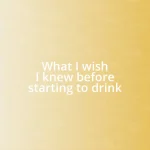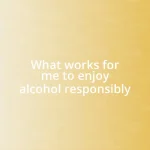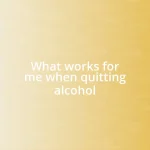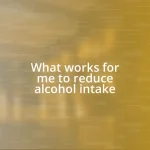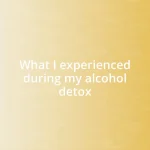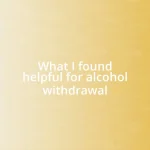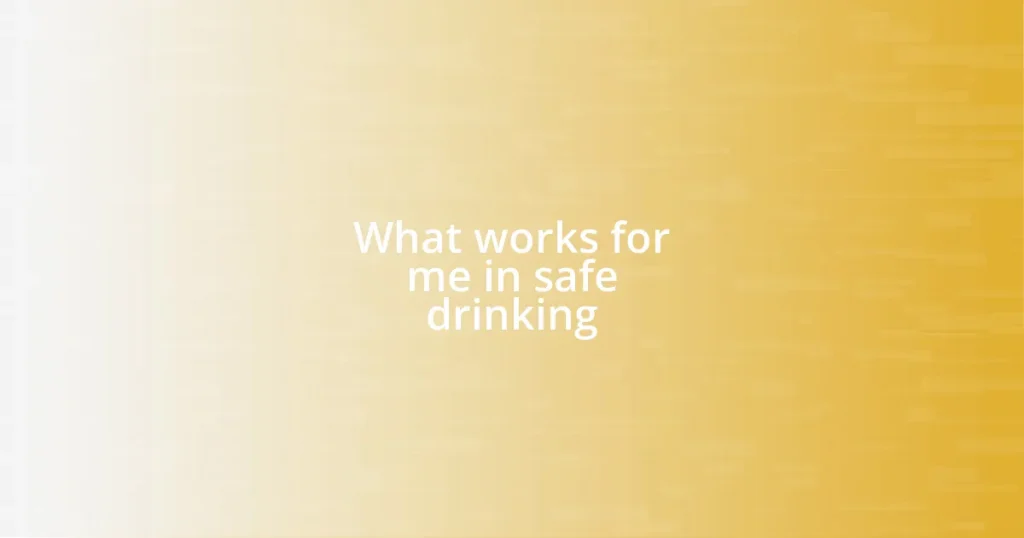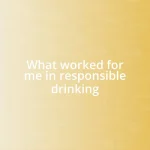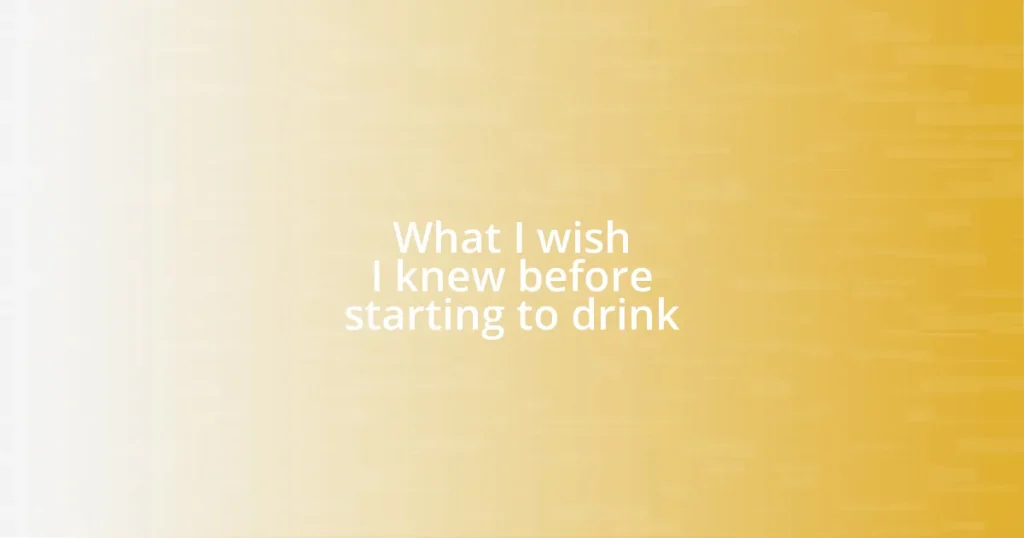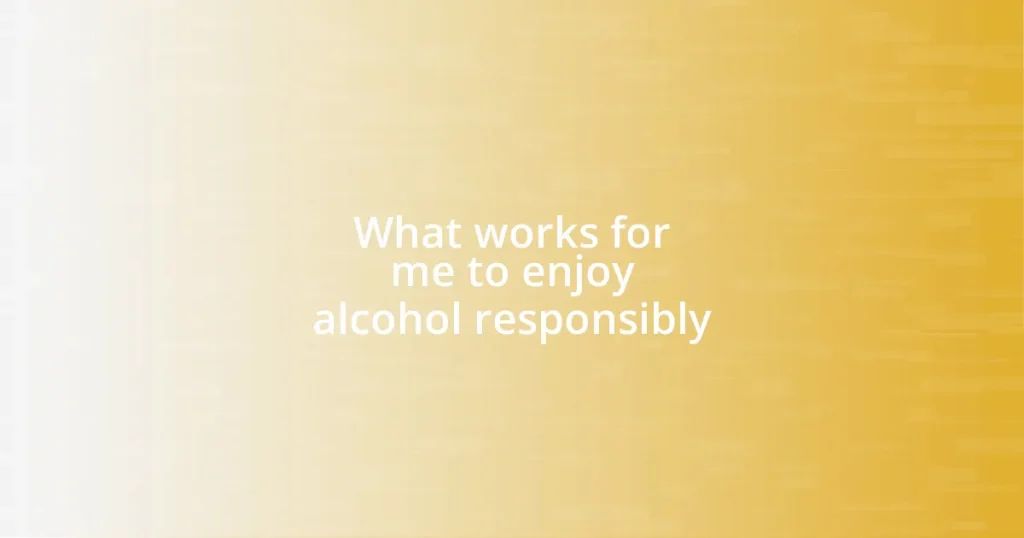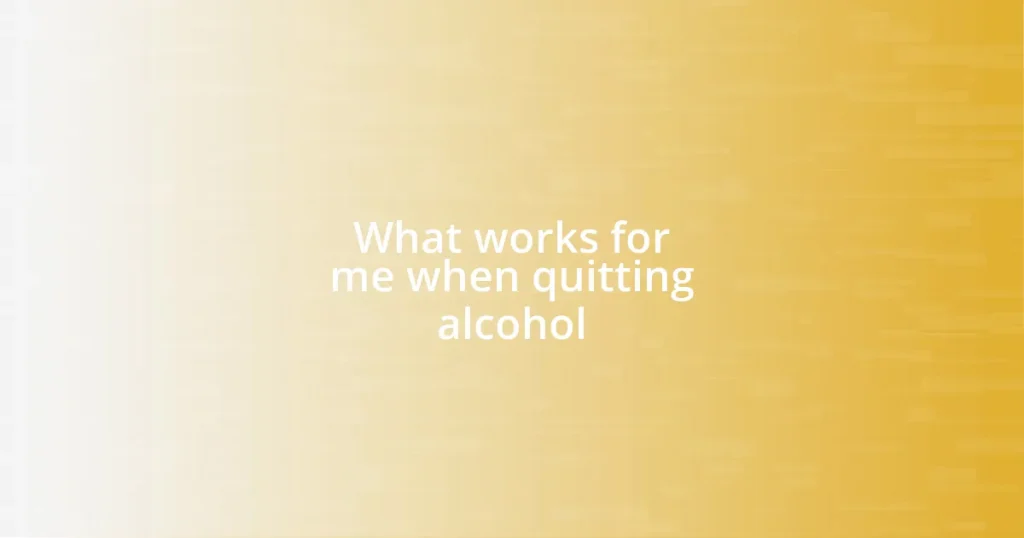Key takeaways:
- Understanding personal limits and staying hydrated are essential for safe drinking practices.
- Choosing a safe water source and using filtration methods are critical to avoid contaminants.
- Regular water quality testing helps identify hidden dangers, ensuring safe drinking water.
- Proper storage in suitable containers and labeling helps maintain water safety and quality.
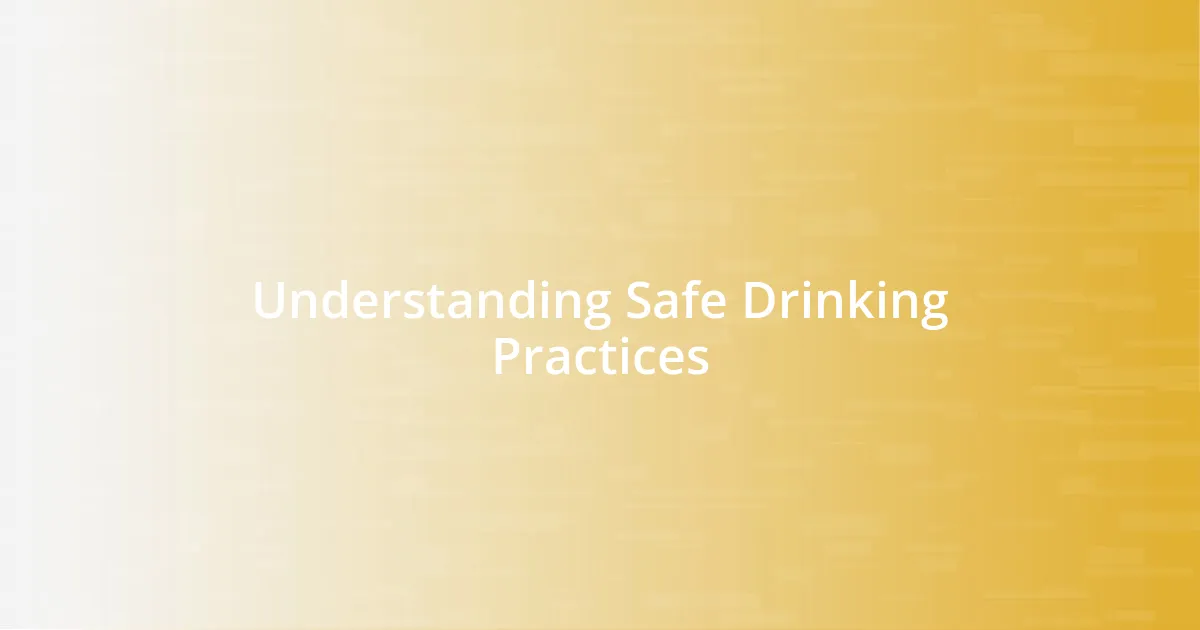
Understanding Safe Drinking Practices
Safe drinking practices are all about knowing your limits and being mindful of what you consume. There have been times when I’ve underestimated my tolerance, and the aftermath wasn’t pleasant. I’ve learned that keeping track of how much I drink during social situations is crucial—not just for the night, but for the next day as well.
It’s not just about measuring alcohol intake, but also understanding how different types of drinks affect us. For instance, I remember a night when I mixed cocktails without realizing the cumulative effect they would have on me. Have you ever had one of those evenings where the hangover was a harsh teacher? Keeping it simple with one type of drink has made my experiences much more enjoyable and manageable.
Moreover, hydration plays a vital role in safe drinking practices. I always make it a habit to alternate alcoholic beverages with water. It’s amazing how this small change can completely transform an evening out. Have you ever noticed how much better you feel after a night of drinking when you stay hydrated? Keeping this in mind has helped me cultivate healthier habits and truly enjoy the moments I share with friends.
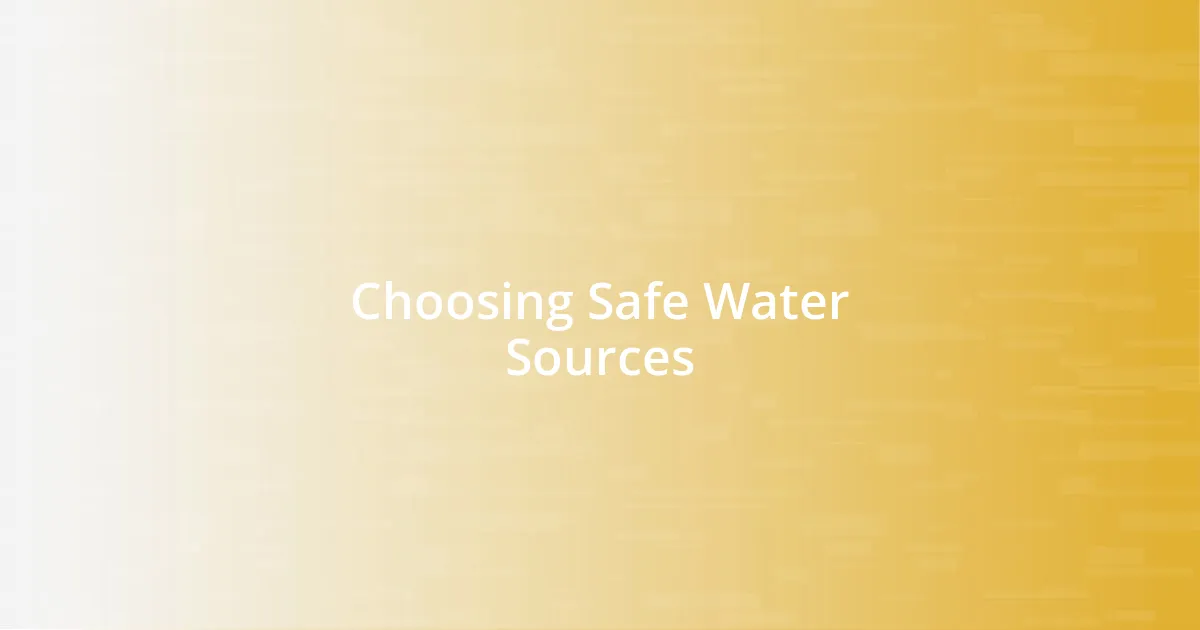
Choosing Safe Water Sources
Choosing a safe water source is an essential part of ensuring the quality of what we drink. I’ve often found myself in situations where I had to rely on tap water during travels. The local water quality can vary immensely, and I learned the hard way that not all tap water is created equal. Trust me, that stomach ache from questionable water is an experience I prefer to avoid.
Here are some tips I use to assess and choose safe water sources:
- Always check local advisories about tap water quality, especially when traveling.
- Use bottled water from reputable brands if you’re in an area with poor water quality.
- Consider using water filters that can eliminate contaminants if you prefer tap water.
- Boil water if you’re unsure about its safety, as this can kill harmful bacteria.
- Ask locals about their water sources; they often have valuable insights.
By staying informed on water safety, I can enjoy my drinking experiences without worry.

Effective Filtration Methods
Effective filtration methods are crucial for ensuring the safety of the water we drink. When I think about this, I remember the time I went camping in a remote area. The local stream looked tempting, but I knew better than to drink unfiltered water. Thankfully, I had a portable water filter with me, and it completely changed my experience. It was reassuring to know that I was turning potentially contaminated water into something safe and refreshing.
Using various filtration systems can significantly affect the quality of drinking water. For instance, activated carbon filters are great for removing chlorine and improving taste, while reverse osmosis systems are more robust and can eliminate a wide range of impurities. I once had a friend who invested in a reverse osmosis system for their home after experiencing frequent stomach issues. The difference was palpable—not only did they feel healthier, but they also enjoyed the clean taste of their water so much that it made drinking water a pleasure rather than a chore.
When selecting an effective filtration method, consider your specific needs and environment. I often ask myself, “What are the contaminants I’m most worried about?” If I’m traveling, a portable filter will suffice, but at home, a more comprehensive system might be better suited. It’s all about finding balance and knowing what works for you.
| Filtration Method | Pros | Cons |
|---|---|---|
| Activated Carbon | Improves taste; reduces chlorine | Doesn’t remove all contaminants |
| Reverse Osmosis | Eliminates a wide range of impurities | Requires installation; waste water |
| UV Light Filters | Effective against bacteria; chemical-free | Requires electricity; doesn’t remove chemicals |
| Boiling | Kills harmful bacteria; easy to do | Takes time; may not remove all impurities |
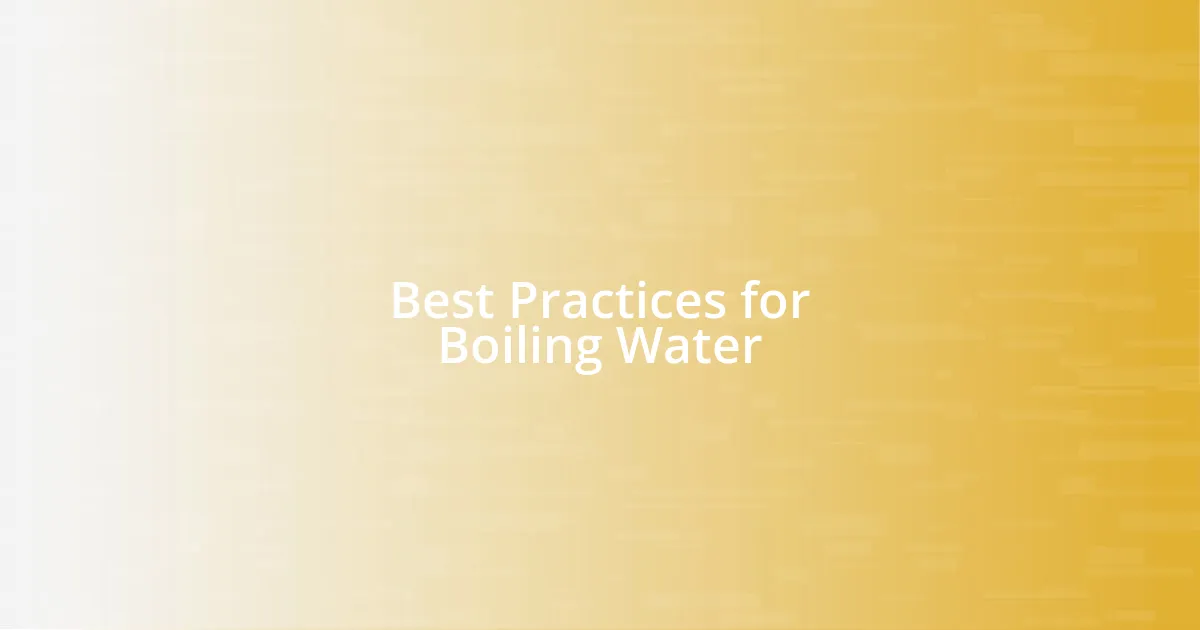
Best Practices for Boiling Water
When I think about boiling water, I remember a chilly backpacking trip where access to safe drinking water was limited. I boiled water from a nearby stream for nearly ten minutes, anxiously watching the steam swirl. The moment I took my first sip, I felt a rush of relief; it was like a warm hug on a cold night.
Boiling is one of the simplest methods for ensuring water safety. I often emphasize that bringing water to a rolling boil for at least one minute can kill bacteria and viruses. However, at higher elevations, I’ve learned it’s best to boil for three minutes. Have you ever been caught in a situation where water quality is questionable? I know I have, and having these boiling guidelines in my back pocket has been a lifesaver.
It’s essential to let the water cool down before drinking, too. I’ve made the mistake of rushing this step, and trust me, you don’t want to sip scalding water! Plus, I always like to store boiled water in clean, sterilized containers to keep it safe until I’m ready to drink. Have you ever considered how your storage methods might affect your water quality? Small details make a big difference in maintaining the safety and taste of the water I’ve worked so hard to purify.
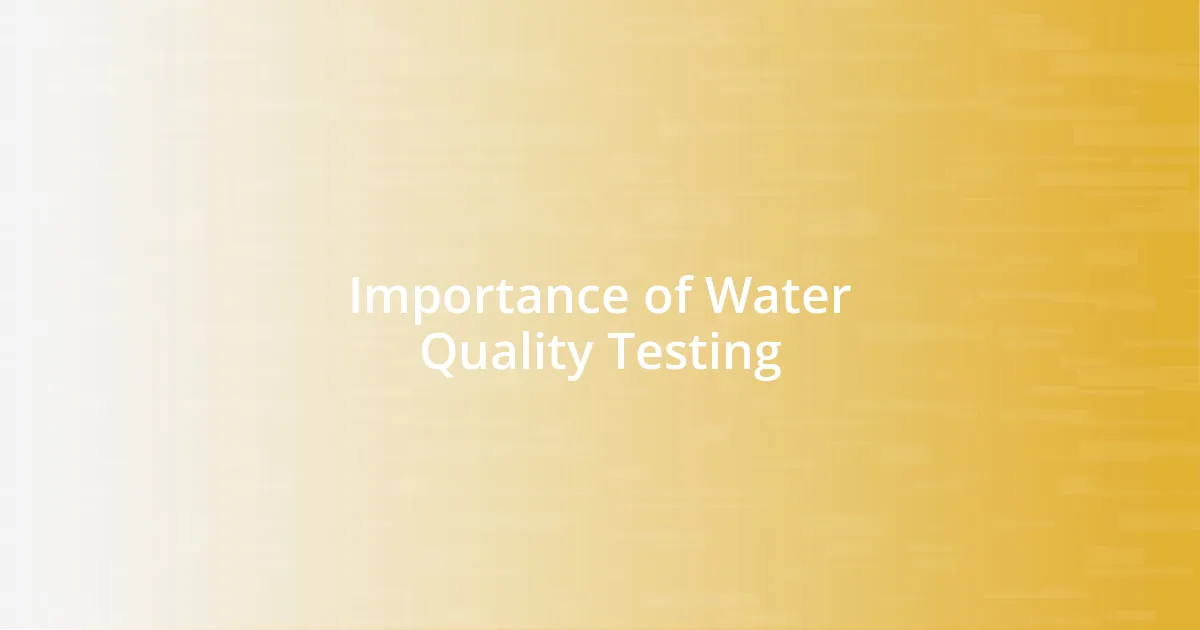
Importance of Water Quality Testing
Water quality testing is something I’ve come to value deeply, especially after a particularly alarming experience. A few years back, I learned the hard way that just because water looks clear, doesn’t mean it’s safe. I remember visiting a friend’s house where the tap water had a strange taste, leading me to investigate further. After some simple testing, we discovered high levels of lead, prompting an immediate switch to filtered water. It was a stark reminder that testing can reveal hidden dangers lurking in what we assume is safe.
In my experience, regular water quality testing has proven invaluable for my peace of mind. It’s not just about checking for contaminants—I’ve found that it helps me understand the specific needs of my water source. Like when I moved into an area with an old plumbing system; keeping tabs on the water quality turned out to be essential. I often wonder, how many people are unknowingly consuming water that could be harmful? Testing provides that safety net, ensuring I can enjoy drinking water without a nagging worry in the back of my mind.
Furthermore, the process of water quality testing can be incredibly enlightening. I was amazed at how much I learned about the different substances present in my home water after conducting tests. Each time, I took note of the results and adjusted my filtration methods accordingly. It’s a bit like tuning in to what your body needs nutritionally; what’s in our drinking water directly impacts our health. Think about it: how often do we really consider what we’re putting into our bodies? Taking the time to test water is an empowering step toward making informed choices about our health.
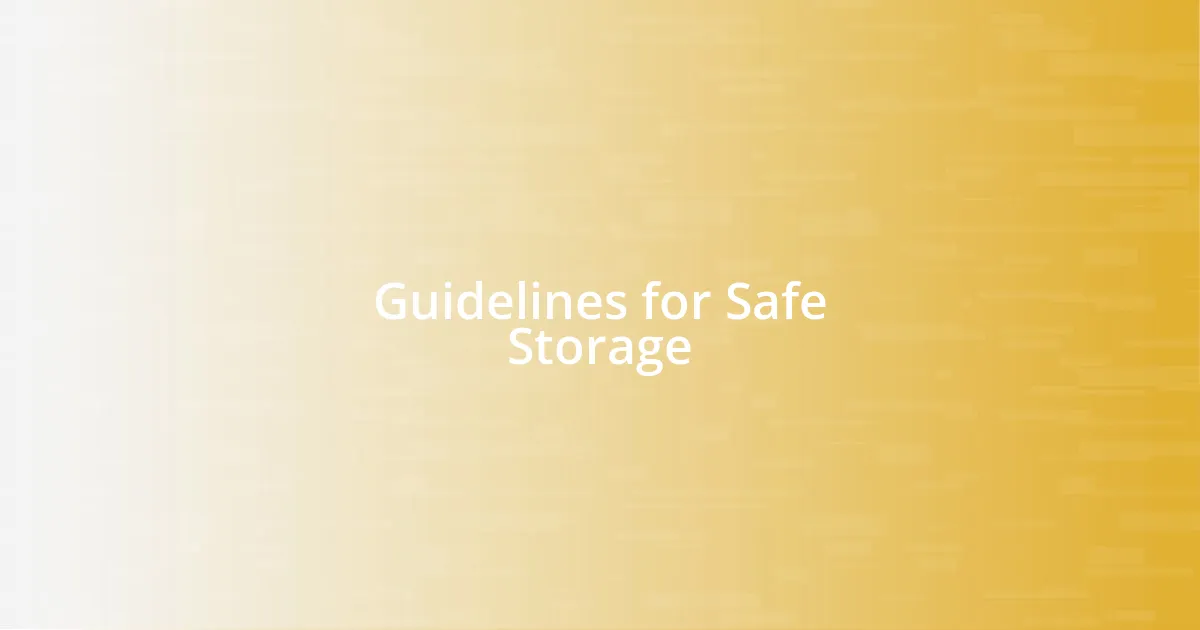
Guidelines for Safe Storage
When it comes to storing water, I always prioritize using the right containers. I remember a time when I stored boiled water in a plastic bottle, thinking it was convenient. To my dismay, I learned that certain plastics can leach harmful chemicals over time, especially when exposed to heat. Now, I stick to glass or food-grade stainless steel containers. Have you noticed what materials your water storage solutions are made from?
Temperature control is another aspect I can’t stress enough. I once had a batch of purified water go bad because I left it in direct sunlight. The flavor changed, and I felt uneasy drinking it. Now, I make it a point to store my water in a cool, dark place, ensuring it remains fresh and safe. Have you thought about where you keep your drinking water?
Lastly, always remember to label your containers with the date. I’ve made the mistake of forgetting how long water has been stored, and it’s just not worth the risk. When I see a label with a date, it gives me that peace of mind knowing I’m drinking water that’s still safe. By following these simple guidelines for safe storage, I feel more confident every time I take a sip. How about you? Are you ready to take these steps for better water safety?
